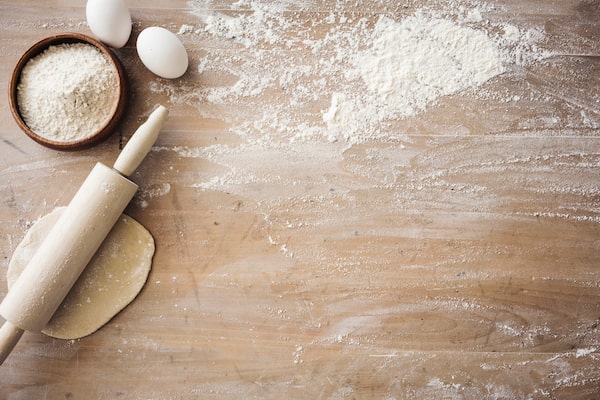
seb_ra/iStockPhoto / Getty Images
Baking is a skill that some people excel at more than others. Technique and precision are important to success, but your choice of flour makes a huge difference, too. You need the right flour to obtain the right texture. The wrong flour can ruin a recipe.
Gluten, formed when two proteins in flour are combined with water, helps provide structure for baked goods.
Wheat varieties are classified as “hard" (meaning higher protein content that can generally form more and stronger gluten) and “soft” (which produces less and weaker gluten).
Cooking 101: Lucy Waverman decodes cooking techniques everyone can master
High-protein flours are best for bread, while lower-protein flours are used for cakes and pastry. Here is how you tell which is which.
Bread flour is hard, which means it produces well-structured and textured bread, but its high protein content will make cakes and pastries tough and dry.
All-purpose flour, one of the most commonly used, is often a mixture of hard and soft wheat. Although you can make bread with it, it is best for most other kinds of baking. I buy unbleached all-purpose flour, which is aged naturally rather than with the use of chemicals. It is denser and not as white as bleached flour, but I do not find any difference in the baking.
Pastry flour, often referred to as cake and pastry flour in Canada, is a softer wheat flour that forms less gluten, so it makes for a tender crust and a moist cake. However, it is not a must-have for your pantry since most recipes call for all-purpose flour. It is also easy to make your own substitute: Measure out 1 cup of all-purpose flour and then remove 2 tbsp. Replace those 2 tbsp. of flour with 2 tbsp. of cornstarch Whisk to combine and then sift a few times to make sure it is well mixed. The cornstarch reduces the protein content making a softer flour.
Cake flour is the softest of all. It is mainly used in the United States to make Southern-style biscuits and is the best option for soft cakes such as angel food and chiffon. However, it can be hard to find. Swans Down is the best-known brand, but I just use pastry flour, or my homemade pastry flour mix, with no difference in results.
Self-rising flour has baking powder and salt already added to it and is a quick solution for some cakes. It is used extensively in British baking recipes. Don’t keep the bags too long as the baking powder loses its effectiveness. As a substitute, for every cup of self-rising flour, use 1 cup all-purpose flour, 1/2 tsp. salt and 1 tsp. baking powder.
Whole-wheat flour retains the bran and germ, both of which are removed from white flour, making it higher in fibre and some nutrients. The most flavourful whole wheat flour is stone ground, but finding it is tricky. One producer is Flourist Milling in Vancouver.
Be careful substituting whole wheat flour for all-purpose, as it will change the outcome. If you do, use ¾ cup whole wheat for every 1 cup of all-purpose. Add extra liquid (about 2 tsp. per cup), otherwise the result will be very dry. You could also use half of each type of flour, plus a little extra water.
Need some advice about kitchen life and entertaining? Send your questions to lwaverman@globeandmail.com.